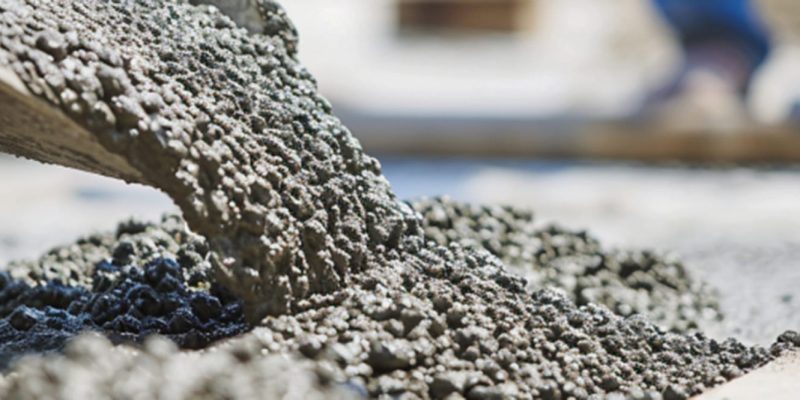Understanding the impact of temperature on concrete pouring is crucial for any construction project. This article offers an in-depth look at why temperature matters and how to manage it effectively. Whether you’re a professional contractor or a DIY enthusiast, mastering these principles is key to ensuring the durability and strength of your concrete work.
Why Is Temperature Relevant to Pouring Concrete?
Temperature’s influence on concrete work is profound. It affects everything from the chemical reactions during setting to the final structural integrity of the concrete.
Chemical Reactions in Concrete Setting: Concrete setting is a chemical process where cement reacts with water in a process known as hydration. This reaction is temperature-sensitive; too low, and the reaction slows or halts, too high, and it accelerates but weakens the end product. Optimal temperature ensures these reactions occur uniformly, leading to stronger and more durable concrete.
Impact on Concrete Strength and Durability: Extreme temperatures, whether too cold or too hot, can significantly impair the strength and durability of concrete. In cold temperatures, the risk of freezing water in the mix can cause internal cracking and compromise structural integrity. Conversely, in hot temperatures, rapid water evaporation prevents the concrete from curing properly, leading to weak and brittle structures. Understanding and managing these temperature effects is vital for quality concrete pouring.
Effects of Temperature When Pouring Concrete
The effects of temperature during concrete pouring can be categorized into challenges presented by cold and hot weather conditions.
Cold Weather Challenges:
- Freezing of Water in the Mix: When temperatures fall below freezing, the water in the concrete can freeze, leading to expansion and internal cracks. This not only weakens the concrete but also compromises its long-term durability.
- Slower Curing Process: Hydration slows down in cold weather, prolonging the setting time. This delay can be problematic, especially in time-sensitive construction schedules.
Hot Weather Challenges:
- Rapid Water Evaporation: High temperatures lead to quicker evaporation of water from the mix, which is essential for the hydration process. This can result in an uneven curing process, leaving the concrete weaker and more susceptible to cracking.
- Increased Risk of Cracking: Due to the rapid drying, the surface of the concrete can crack, which affects both the appearance and the structural integrity of the concrete.
Mitigating these temperature effects is crucial for ensuring the quality and longevity of the concrete.
Factors to Consider When Pouring Concrete in Varying Temperatures
Several critical factors must be considered when pouring concrete in different temperatures to ensure optimal results.
Environmental Conditions: Besides the air temperature, humidity and wind play significant roles. High humidity in hot weather can slow down water evaporation, while wind can increase it, affecting the curing process.
Material Preparation: Tailoring the concrete mix to the prevailing temperature conditions is essential. In colder climates, using warm water or adding chemical accelerators can help maintain the necessary reaction rate. In contrast, in hotter climates, using cold water or retarders can slow down the hydration process to allow for proper curing.
Timing of the Pour: The time of day when the concrete is poured is critical. In hot climates, early morning or late evening pours can take advantage of cooler temperatures. In colder climates, pouring during the warmest part of the day can help achieve better curing conditions.
By considering these factors, contractors can adjust their practices to suit different environmental conditions, ensuring the concrete sets properly and achieves the desired strength and durability.
Ideal Temperature to Pour Concrete
The optimal temperature range for pouring concrete is between 50 and 60°F. Within this range, the conditions are ideal for the hydration process to occur effectively, ensuring the concrete sets properly and gains sufficient strength.
Adapting to Local Climate: In regions where achieving the ideal temperature range is challenging due to local climate conditions, various strategies can be employed. For instance, in colder climates, insulating blankets can be used to maintain the temperature, while in hotter climates, cooling the concrete mix or providing shade can be effective.
Professional Insights: Experienced contractors understand the nuances of working with concrete in different temperatures. They know how to adapt the mix and process for optimal results. This includes understanding the local climate and making adjustments accordingly, such as altering the water-to-cement ratio or using different admixtures.
Additional Tips for Successful Concrete Pouring
To achieve success in concrete pouring across various temperatures, additional tips can be helpful:
Use of Insulating Materials: In colder climates, using insulating materials like blankets or heating pads can help maintain the necessary temperature during the curing process.
Hydration Techniques: In warmer climates, techniques such as misting the concrete with water or using evaporation retardants can help prevent rapid drying and ensure proper hydration.
Monitoring and Adjusting: Continuously monitoring the concrete’s temperature and making necessary adjustments is key to achieving the best quality. This includes using thermometers to check the concrete’s temperature and adjusting the mix or curing techniques accordingly.
Conclusion
Mastering the intricacies of temperature management in concrete pouring is crucial for any successful project. By understanding and applying these insights, you ensure not only the immediate success of your project but also its long-term durability. Embrace these principles for all your concrete work, and you’ll see the quality and longevity of your projects improve significantly.

